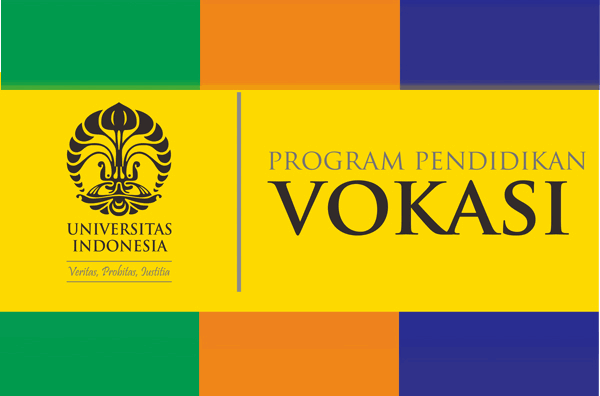Jurnal Fisioterapi Terapan Indonesia
Abstract
The purpose of this case study is to determine the effect of diaphragmatic breathing and endurance exercise in hospital-acquired pneumonia (HAP). Nosocomial pneumonia that occurs in 48 hours or more after the patient admitted to the hospital, without any signs of pulmonary infection. The existence of clinical manifestations that appear, patients with HAP tend to avoid physical activity which can decrease the functional capacity of the respiratory system and have an impact on decreasing endurance. Diaphragmatic breathing exercise is thought to be able to help reduce shortness of breath, reduce the work of the accessory muscles of breathing, improve breathing frequency and also improve breathing patterns. Endurance training aims to increase the stimulation of the cardiorespiratory system response so that oxygen transportation becomes more efficient and the patient is able to carry out optimal activities. Evidence-based case report is the method of this research, with a clinical question "Does diaphragmatic breathing exercise and endurance exercise have a better effect on increasing endurance in hospital-acquired pneumonia?" To be able to answer this question, a case study was conducted by applying diaphragmatic exercise and endurance exercise, then to support the evidence from the results of the opener exercise, evidence was searched in 2 databases, namely Scopus and Science Direct. The keywords used were “diaphragmatic breathing exercise” OR “deep breathing exercise” AND “reduce dyspnea” and “endurance exercise” AND “cardiorespiratory endurance” AND “metabolic equivalents” with the inclusion criteria of full text articles and publications in 2015-2020. The search found 7 articles that met the inclusion criteria. Then the search stage was continued by reading the entire article and found 3 articles on Scopus and 1 article on Science Direct
References
1. Halim, Samuel; Amin Z. Profil Klinis Pasien Hospital Acquired Pneumonia di Ruang Rawat Penyakit Dalam. Ebers Papyrus. 2014;20(1):19–28. 2. Warganegara E. Pneumonia Nosokomial: Hospital-Acquired, Ventilator-Associated, dan Health Care-Associated. J Kedokt Unila. 2017;1(3):612–8. 3. Indonesia PDP. Pneumonia Nosokomial Pedoman Diagnosis dan Penatalaksanaan di Indonesia. In: PDPI. 2003. 4. Infections T committee for TJRS guidelines in management of respiratory. Definition and Pathophysiology of Hospital-Acquired Pneumonia. Japanese Respir Soc. 2004;9:s3–5. 5. Amin, Akhmad Alfajri; Kuswardani; Setiawan W. Pengaruh Chest Therapy dan Infra Red pada Bronchopneumonia. J Fisioter dan Rehabil. 2018;2(1):9–16. 6. Evangelodimou A, Grammatopoulou E, Skordilis E, Haniotou A. The Effect of Diaphragmatic Breathing on Dyspnea and Exercise Tolerance During Exercise in COPD Patients. Chest [Internet]. 2015;148(4):704A. Available from: http://dx.doi.org/10.1378/chest.2277852 7. Kartikasari D, Jenie IM, Primanda Y. Latihan Pernapasan Diafragma Meningkatkan Arus Puncak Ekspirasi (Ape) Dan Menurunkan Frekuensi Kekambuhan Pasien Asma. J Keperawatan Indones. 2019;22(1):53–64. 8. Yulia A, Dahrizal D, Lestari W. Pengaruh Nafas Dalam dan Posisi Terhadap Saturasi Oksigen dan Frekuensi Nafas Pada Pasien Asma. J Keperawatan Raflesia. 2019;1(1):67–75. 9. Pryor, J.A; Webber B. Physiotherapy for Respiratory and Cardiac Problems. UK Churchill Livingstone. 2003;89(7):448. 10. Febrianta Y. Kebugaran Kardiorespirasi Pemain UKM Sepakbola Universitas Muhammadiyah Purwokerto 2015. J Din Pendidik Dasar. 2015;7(2):10–20. 11. Khotimah S. Latihan Endurance Meningkatkan Kualitas Hidup Lebih Baik dari pada Latihan Pernapasan pada Pasien. J Chem Inf Model. 2019;53(9):1689–99. 12. Hill K, Holland A, Physiotherapy B. Pulmonary Rehabilitation Exercise Prescription in Chronic Obstructive Pulmonary Disease. J Cardiopulm Rehabil Prev. 2016;36(July 2015):75–83. 13. Ilmiyanto F, Budiwanto S. Perbedaan Pengaruh antara Metode Latihan Fartlek dan Metode Latihan Continuous Tempo Running Terhadap Peningkatan Daya Tahan Kardiovaskuler. Indones Perform J. 2017;1(2):91–7. 14. Nugroho IA, Sukartini T. Low Impact Aerobic Exercise dapat Menurunkan Keluhan Gejala Pasien Penyakit Paru Obstruktif Kronik. 7th Univ Res Colloqium 2018. 2018;7(Gold 2016):329–35. 15. Mazzuca E, Castrogiovanni A, Bonsignore MR. Endurance Training : Is it Bad for You? Breathe. 2016;12(2):140–7. 16. Pradana A, Tarigan AP, Mediyanti T, Mutiara E, Pandia P. Effects of Lower Limb Endurance Training on Maximal Oxygen Uptake (VO2Max) in Chronic Obstructive Pulmonary Disease. 2017;37(4):283–7. 17. Nellessen A, Hernandes NA, Pitta F. Physiotherapy and rehabilitative interventions in patients with chronic respiratory diseases: Exercise and non-exercise treatment. Panminerva Med. 2015;55(2):197–209. 18. Galvez I. Energy Expenditure and Weight Loss with Aerobic Exercise : A Longitudinal Study in Young Adults. In: Journal of Human Sport and Exercise. 2019. p. 5–8.
Recommended Citation
Azzahra, Alifia; Puspitarani, Annisya; Sativani, Zahra; and Pahlawi, Riza
(2022)
"PENGARUH DIAPHRAGMATIC BREATHING DAN ENDURANCE EXERCISE TERHADAP PENINGKATAN KAPASITAS KARDIORESPIRASI PADA PASIEN HOSPITAL-ACQUIRED PNEUMONIA,"
Jurnal Fisioterapi Terapan Indonesia: Vol. 1:
Iss.
2, Article 3.
DOI: 10.7454/jfti.v1i2.1034
Available at:
https://scholarhub.ui.ac.id/jfti/vol1/iss2/3
Included in
Integrative Medicine Commons, Kinesiotherapy Commons, Neurology Commons, Occupational Therapy Commons, Orthotics and Prosthetics Commons, Other Rehabilitation and Therapy Commons, Pediatrics Commons, Physical Therapy Commons, Physiotherapy Commons, Respiratory Therapy Commons, Sports Medicine Commons, Sports Sciences Commons, Vocational Rehabilitation Counseling Commons








